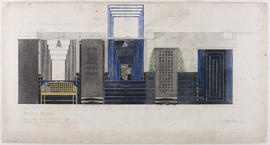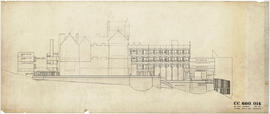The Renaissance of Roman Architecture
- NMC/1703AA
- Item
- 1951
This is an illustrated piece of text about influences on architecture during the Renaissance.
This is the twenty-seventh page of James Gorman's collection of handwritten, illustrated pages on the history of architecture which were produced as classwork for 'Section II'.
Please be aware that these pages should be read from NMC/1703A-Z, then NMC/1703AA, AB etc.
Gorman, James



